Nullahplace
Hong Kong 2022

The process of making place
Located in the dense district of Prince Edward in Kowloon nullahplace was designed with the objective of demonstrating how the use of temporary urban design interventions can be an effective bottom-up planning tool to reactivate abandoned and residual urban spaces of the city. By exploring the idea of ‘making place’ as a method to develop a more inclusive and vibrant urban environment, nullahplace was conceived to create new areas for social interaction in this dense urban area of Hong Kong.
Hong Kong is well known for its vertical density and the bold and expressive super scale text ‘nullah’ which remarks the name of the nearby nullah road can be seen clearly from the buildings surrounding the site. By using a combination of colorful and geometric patterns the text extends all over the floor creating a sequence of flexible spaces in relationship with the linear and regular geometry of the district. At eye level, a distinctive graphic language in English and Chinese aims to engage the users of the space with friendly messages. The urban furniture, which consists of colorful and movable elements, intends to attract different type of users and can be combined with the geometry and colors of the floor in flexible spatial configurations. The possibility of moving chairs, tables, and plants provides opportunities for active and passive engagement while stimulating different grades of socialization among users as well as fostering relationships among generations. Furthermore, rather than placing signage and rules that restrict activities in public spaces, a series of colorful posters were installed to promote positive behavior by using ironic and thoughtful sentences. This low-cost urban intervention funded by a seed grant of the Chinese University of Hong Kong was completed in 9 working days during the month of April 2022, involving students, volunteers, and members of the community.
Hong Kong is well known for its vertical density and the bold and expressive super scale text ‘nullah’ which remarks the name of the nearby nullah road can be seen clearly from the buildings surrounding the site. By using a combination of colorful and geometric patterns the text extends all over the floor creating a sequence of flexible spaces in relationship with the linear and regular geometry of the district. At eye level, a distinctive graphic language in English and Chinese aims to engage the users of the space with friendly messages. The urban furniture, which consists of colorful and movable elements, intends to attract different type of users and can be combined with the geometry and colors of the floor in flexible spatial configurations. The possibility of moving chairs, tables, and plants provides opportunities for active and passive engagement while stimulating different grades of socialization among users as well as fostering relationships among generations. Furthermore, rather than placing signage and rules that restrict activities in public spaces, a series of colorful posters were installed to promote positive behavior by using ironic and thoughtful sentences. This low-cost urban intervention funded by a seed grant of the Chinese University of Hong Kong was completed in 9 working days during the month of April 2022, involving students, volunteers, and members of the community.
Author
Francesco Rossini
Project Team
Francesco Rossini, Venus Cheung, Giovanna Santoro
Completion
2020
Location
Hong Kong, Prince Edward
Funding
Faculty of Social Science, CUHK (Direct Grant)
Project Budget
15.000 HKD
Grant Budget
100.000 HKD
Partnership/Collaborations
Concern For Grassroots Livelihood Alliance
Collaborate Hong Kong
Children Development Right Association
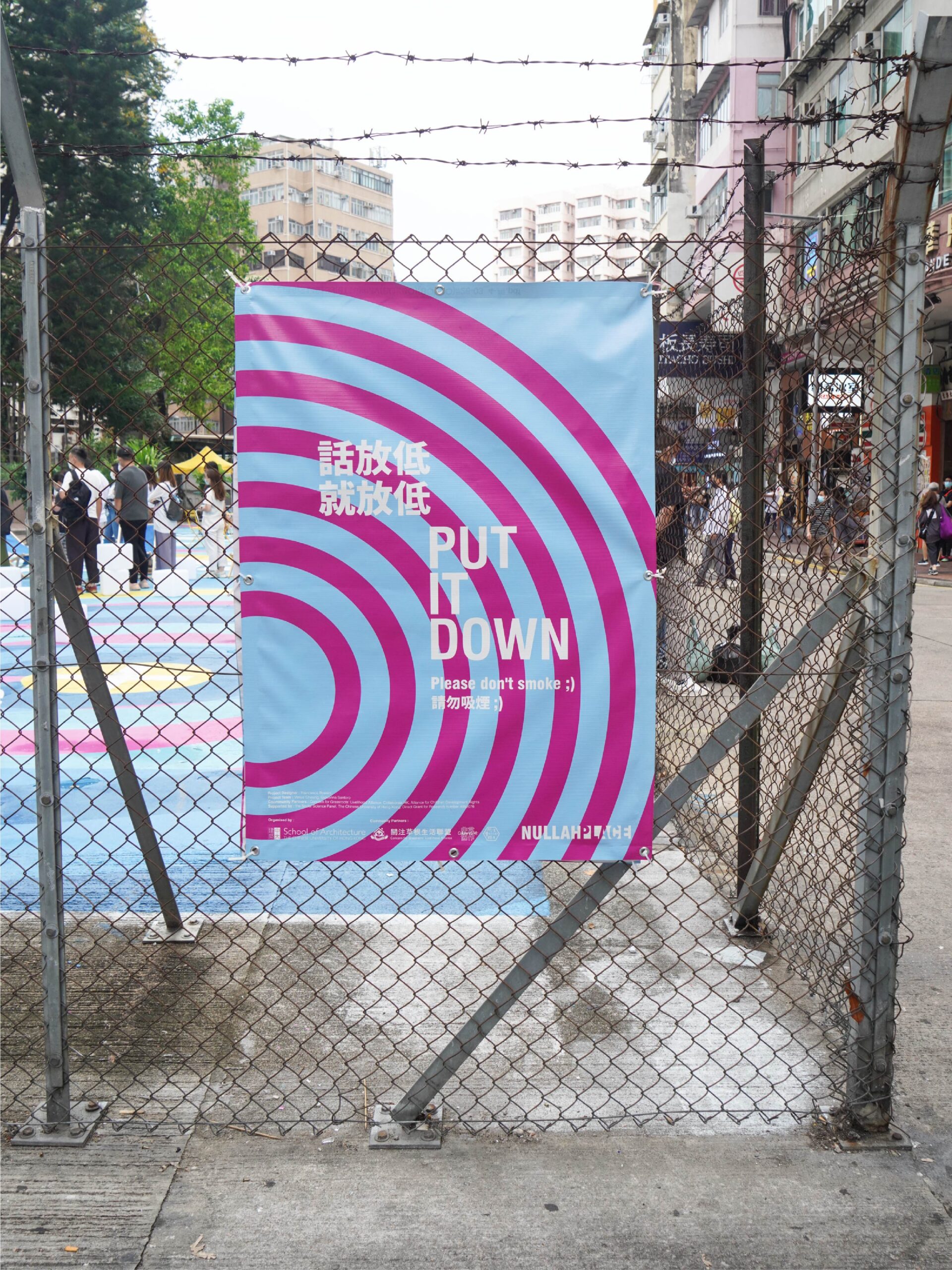

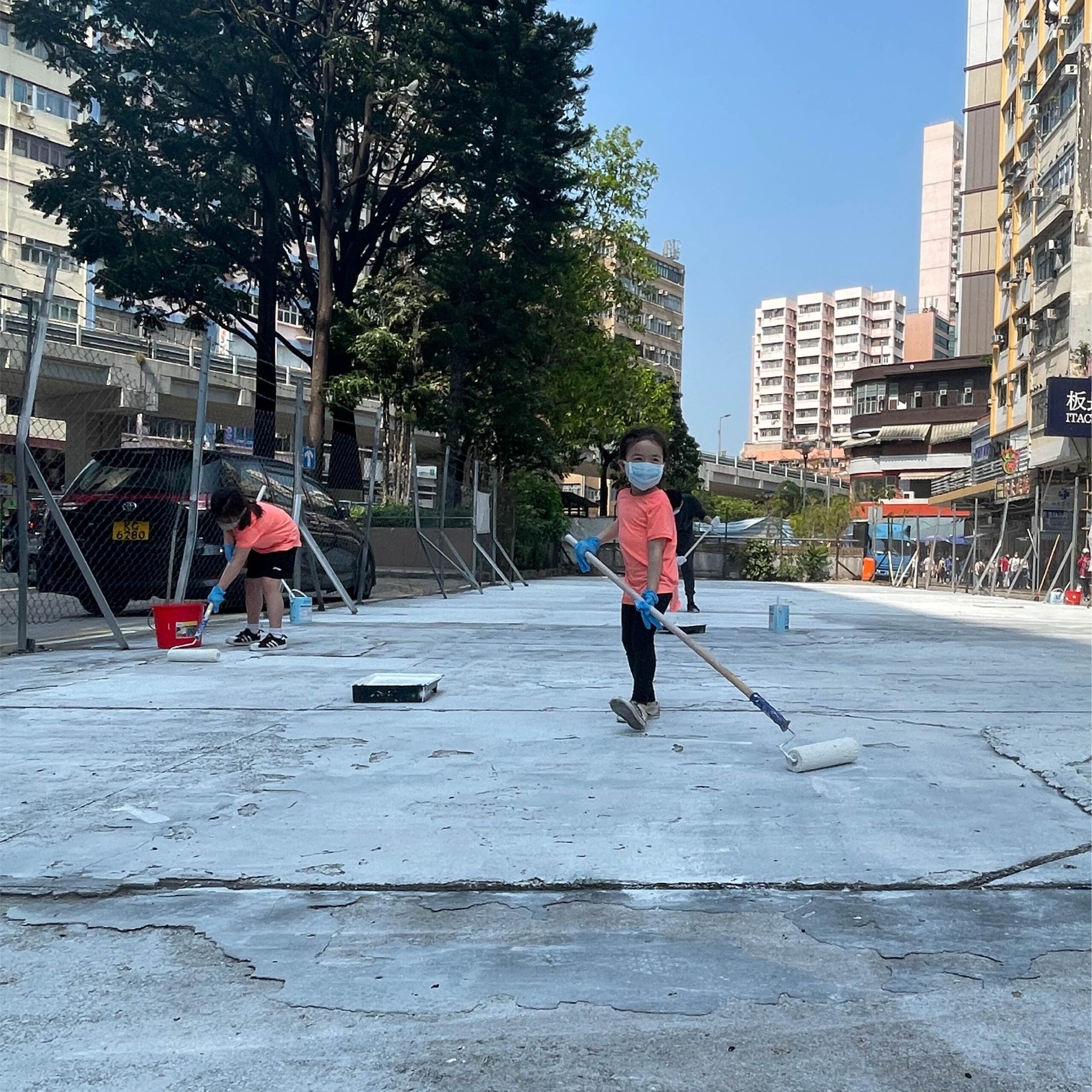
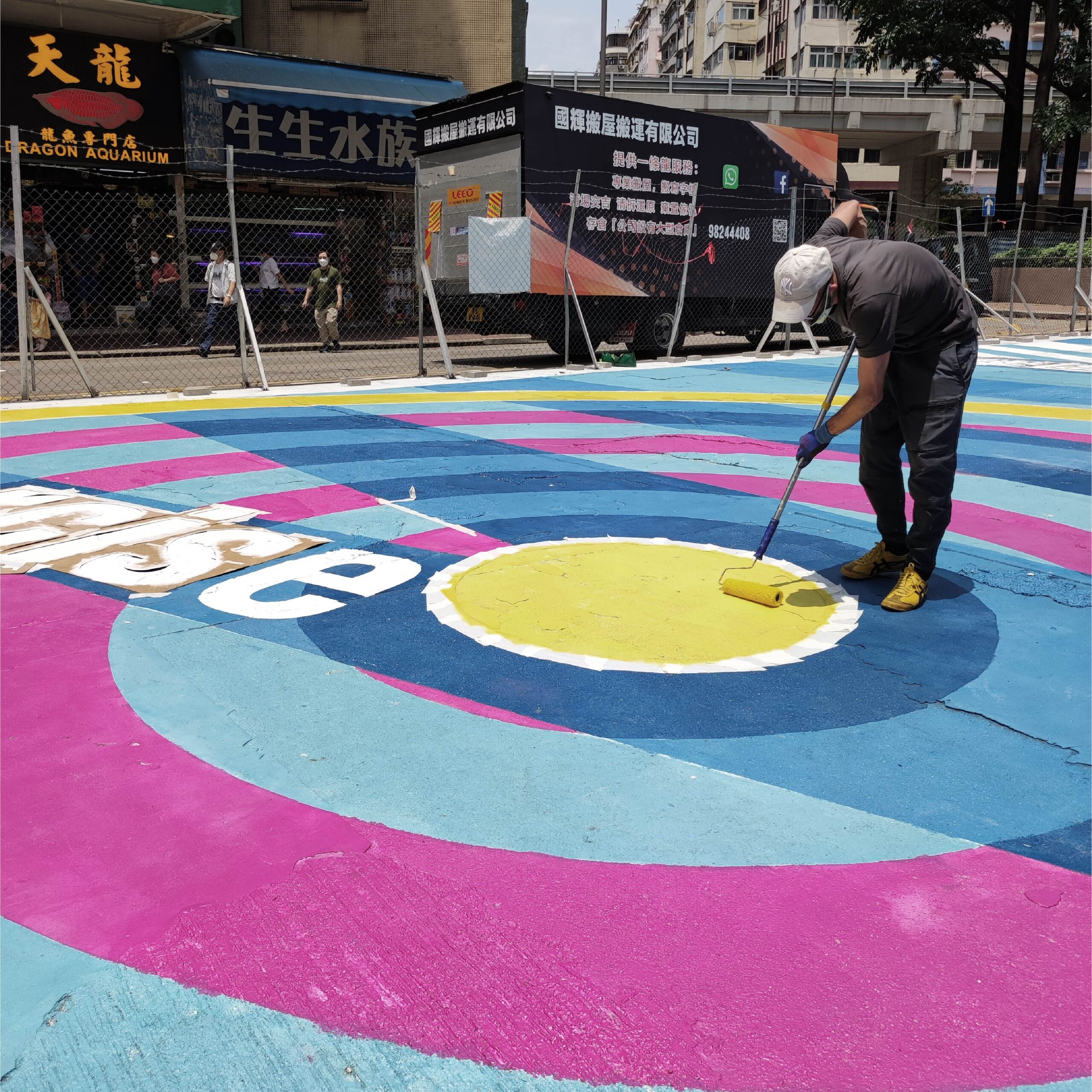
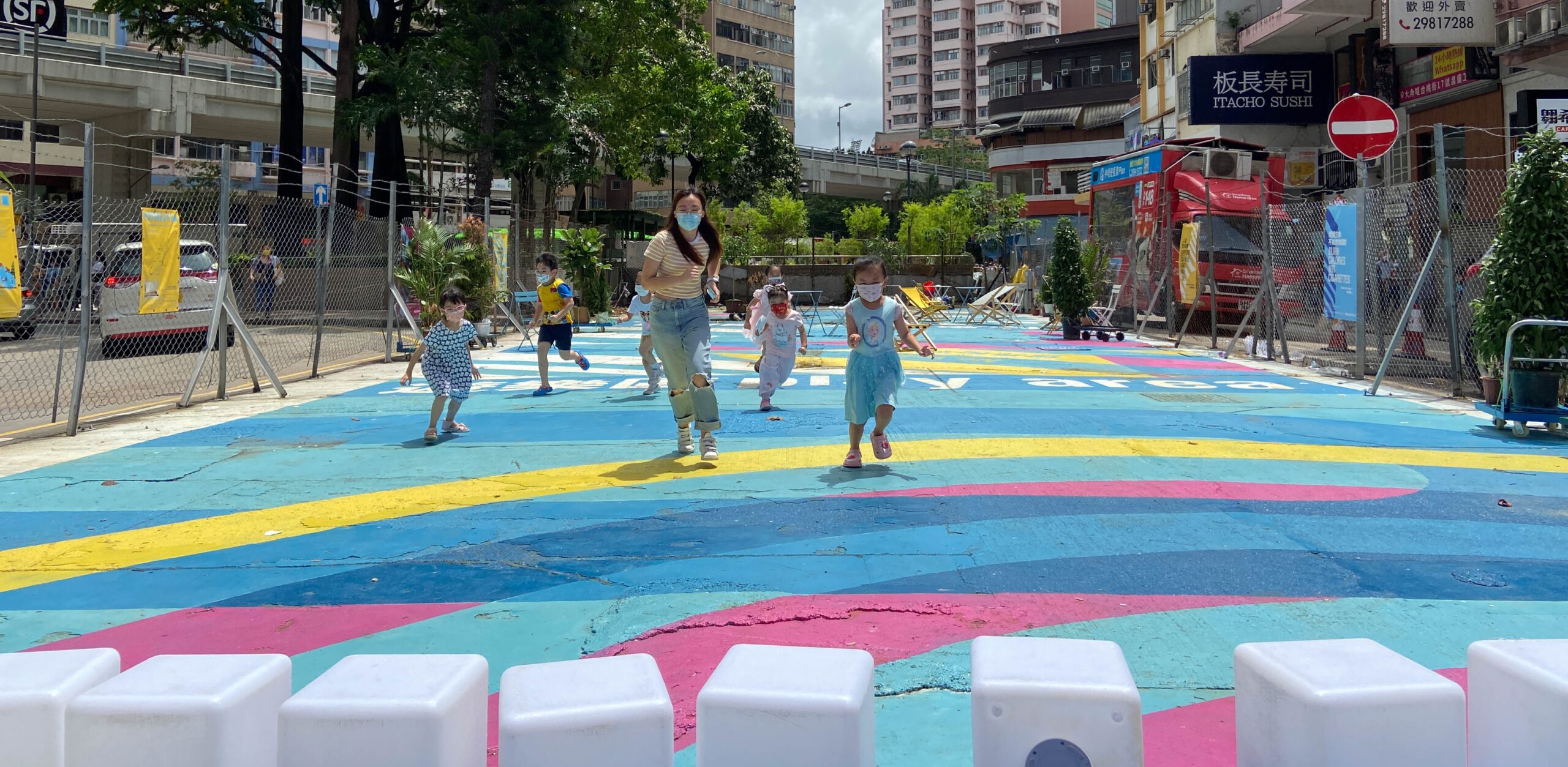
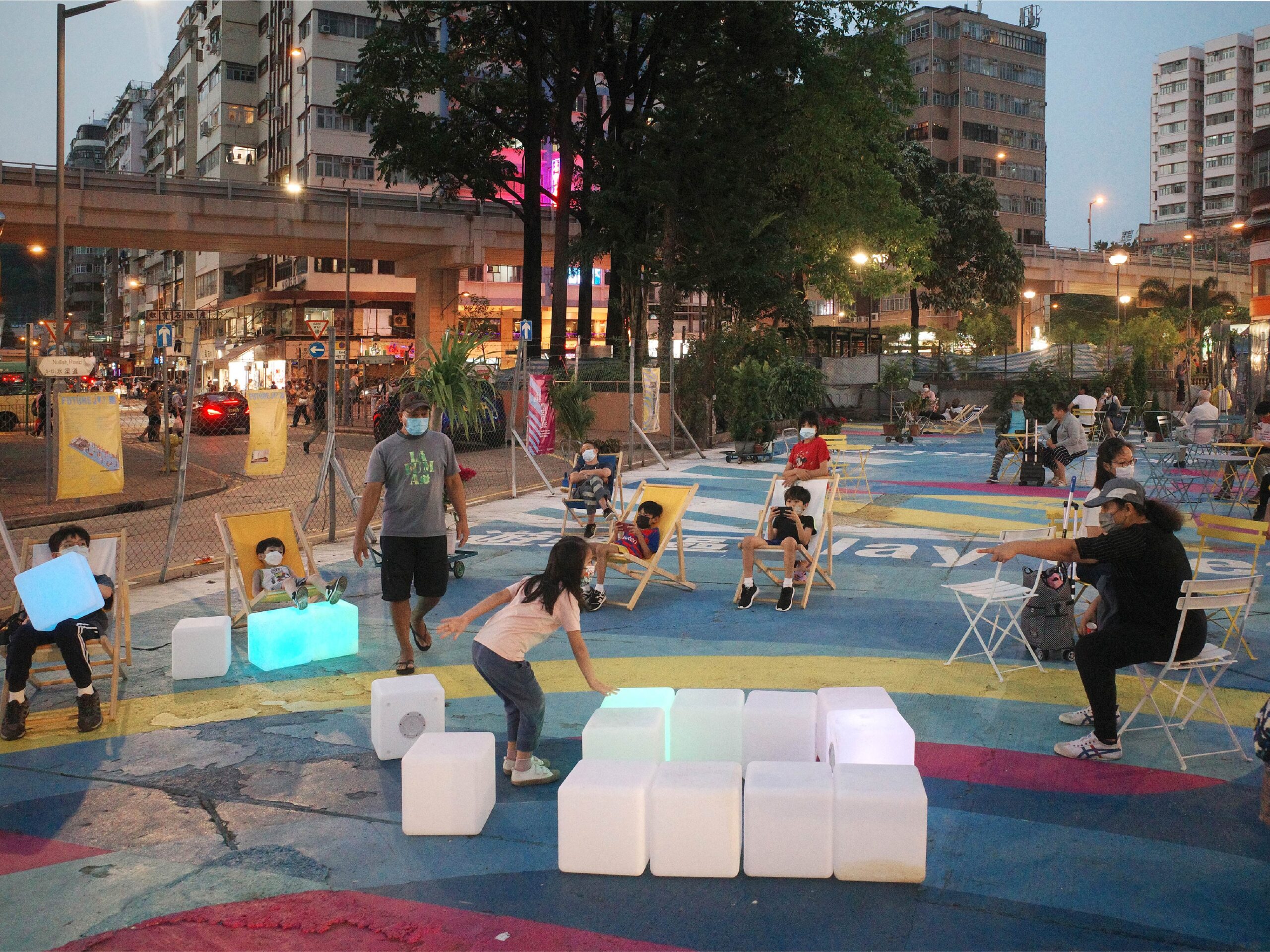
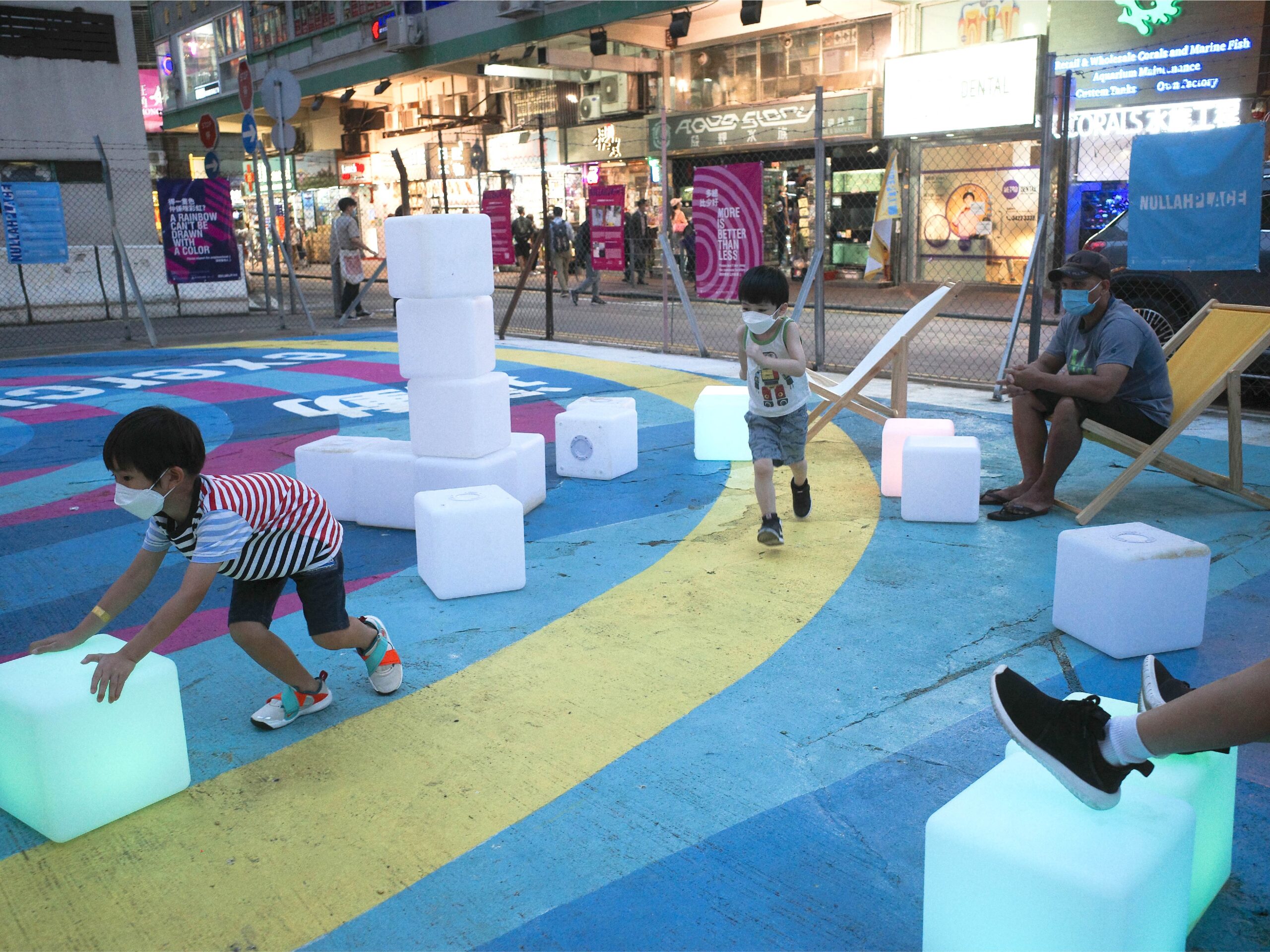


NEXT
The School in Red
PROJECT
